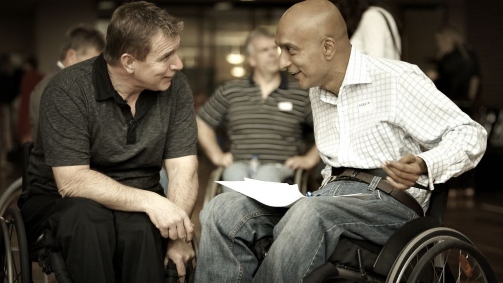How to Keep Healthy

A spinal cord injury should not stop you living a long and healthy life.
This section provides practical information to help you maximise your health and wellbeing. It will also help to problem solve what to do if you have issues or questions.
Your shoulders need a balance of strength and flexibility to be able to do its job correctly. Chronic shoulder pain has been shown to be markedly reduced by completing a relatively simple program of strengthening and stretching.
Overuse and weight bearing on weak shoulders can lead to injured and painful shoulders. If there is weakness in your stabilising muscles your movement will be inefficient and you may be at risk of damaging your shoulder joint.

As a wheelchair user you will rely on your arms a lot. Unfortunately, the shoulders are not designed to take the heavy workloads demanded of them by transfers and wheelchair propulsion. It is important to look at ways you can reduce the impact on your shoulders so they have a long and healthy future.

Good nutrition helps keep you in good health. If you have a spinal cord injury eating well is even more important, as it can help your body resist infection and maintain good skin, bladder and bowel habits.

It is important to maintain a healthy weight. This will help to keep you feeling and looking well, and able to do all the things you need to each day.

Living with a spinal injury can be stressful, both physically and emotionally. This stress may disrupt your sleep, or your sleep may be disrupted by physical factors resulting from your injury.

Being fit and active is important for good health.

Good posture when you are sitting in a wheelchair is important for many reasons.

The rate of perceived exertion is a scale used to monitor exercise intensity.
It's useful to have a set of questions on hand when you are trying to find out how accessible a sporting facility is.

Taking the pressure off can help prevent skin injuries.



